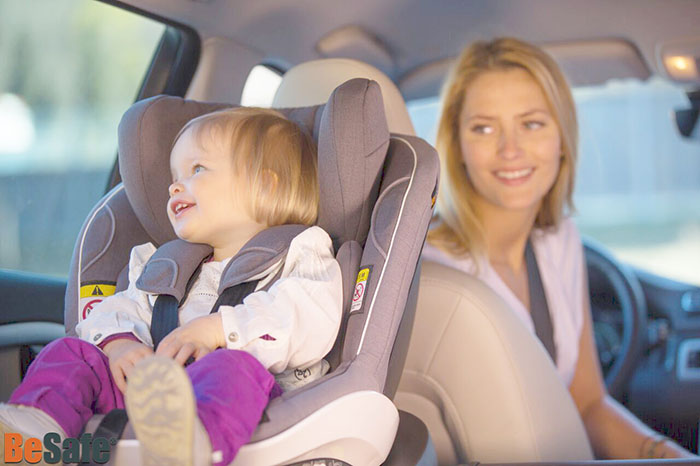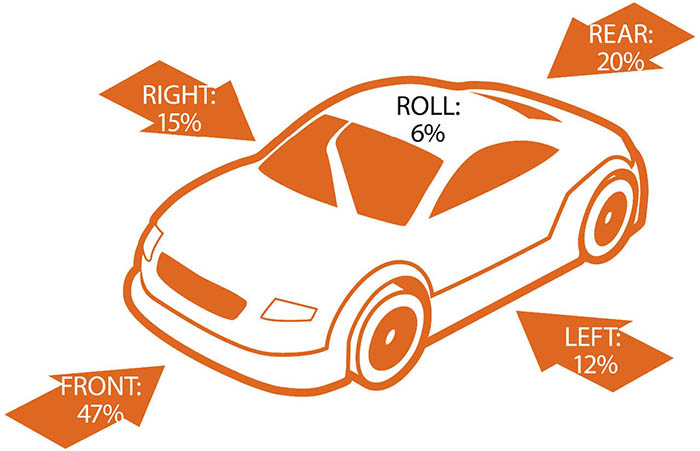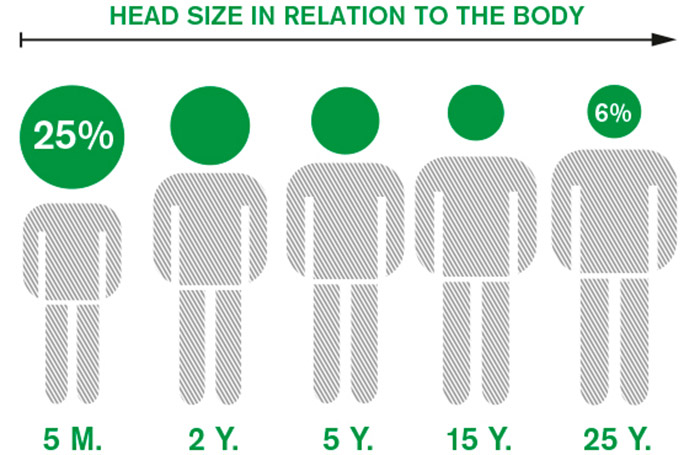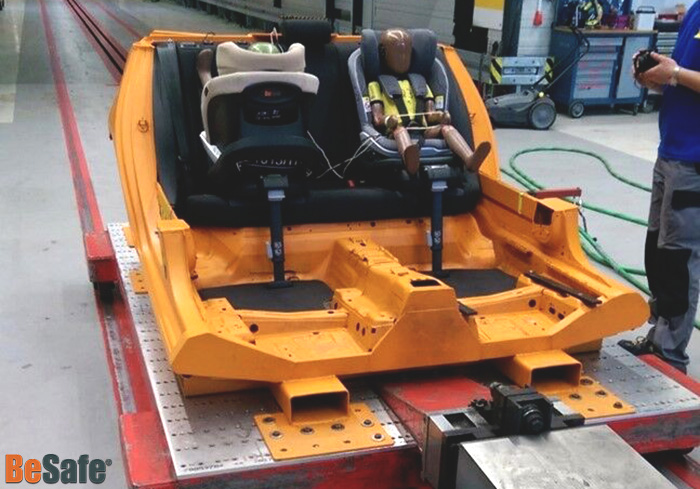As safety-conscious parents we've all heard the dictum that rear-facing car seats are generally safer than their forward-facing counterparts, and chances are you've seen the passionate pro-ERF campaigns that want us to know that rear-facing seats offer superior protection for your child in car accidents - but why is rear-facing safer?
Do bumper sticker mantras such as 'rear-facing means staying safer for longer' and 'rear-facing is 5 times safer' hold any scientific weight behind them? We believe the answer is yes, and here's why.
Frontal impacts are the most common car accidents
The most common and severe type of car accident is a frontal collision, which constitutes 47% of total accidents. No-one can anticipate a serious collision and we all want to believe it'll never happen to us - we're safe drivers aren't we? Road accidents only happen to an unfortunate few, right?
But no matter how vigilant you are behind the wheel, and even if you're just nipping round the corner to drop your child at their grandparents' house, accidents can happen at any time to any of us.
We believe it's best to be prepared for the worst case scenario - the frontal collision. Naturally you want total reassurance that your child's car seat is providing them with the best possible protection in the event of the unexpected, so given that frontal impacts are the most common accidents it makes sense to ensure your child is optimally positioned to reduce the effect of the impact.
The science and the statistics speak for themselves
Time and time again, rear-facing car seats have been proven to outperform their front-facing counterparts in crash tests. It's been proven that travelling in a rear-facing car seat will greatly reduce the stress on your child's neck and spine, providing superior protection in the event of a frontal impact.
Your baby's soft, delicate muscles are still developing during their early years; if the muscles and spine are subject to too great a force the consequences can be catastrophic. The video simulation below illustrates the difference between travelling rear-facing vs. forward-facing during a frontal collision.
The most essential difference between you and your baby is head size. It's crucial to remember that babies are not simply smaller, proportionate versions of adults.
The head of a 5-month-old baby is disproportionately heavy, representing 25% of their total body weight. For an adult the head represents a mere 6% and their muscles and reactions are significantly more developed. In a forward-facing seat during an impact, the child is flung forward in their seat with their head violently thrown forward towards their knees, placing considerable stress on their delicate neck, spine and upper body.
The weight of the head combined with the underdeveloped skeleton can cause the spinal cord to stretch up to two inches. If the child's spinal cord stretches just half an inch it will snap, leading to internal decapitation, paralysis or death. In a rear-facing car seat during a frontal impact, however, the child is pushed back into their car seat and the force of the impact is spread across the back of the car seat, significantly reducing the impact on your child's body. An added bonus that is rear-facing children are not directly in the path of flying harmful debris.
When a collision occurs at 31 mph the stress inflicted on the neck of a child weighing 15kg and is seated in a forward facing position will be the equivalent of a whopping 180-220 kg . If the child instead is seated rear facing, the stress would be reduced to just 40-60kg.
The UK is comparatively behind when it comes to ERF, but we're catching up

Rear-facing only became en vogue in the UK 5-6 years ago, although Sweden pioneered the phenomenon decades ago. It could be said that we Brits are fashionably late to the Scandinavian rear-facing party, but we're catching up and keeping up.
The rear-facing revolution dates back to early-1960s Sweden when medical traffic researchers discovered the advantages of placing small children sitting rear-facing in a collision. Researchers were inspired by the molded seats astronauts used for take-off and landing, which protected their head, neck and spine. The first rear-facing child car seat was designed as early as 1963.
As a consequence of this research there are no forward-facing car seats designed for children under the age of 3 on the Swedish market; this reflects very well on Sweden, the country with the lowest accident statistics in Europe.
Sweden is a world leader when it comes to child car safety. In order to stay ahead they introduced the Plus Test, one of the world's strictest and most demanding tests for car seats. Not many seats have passed the Plus Test, but all that have are rear-facing car seats.
Rear-facing has been independently proven to be 5 x safer
Independent studies of real traffic accidents carried out by Volvo and Folksam show that your child, up to the age of 4 years, has a 5 times greater chance of surviving and/or avoiding serious injury if sitting rear facing rather than forward facing in the car. Traffic accident studies from Volvo show that amongst children sitting rear facing in the age group 0-4 years, only 8% was injured and needed medical assistance. For children sitting forward facing in the same age group, 40% of the children needed medical assistance. (Source)
Hopefully we've given you all the information you need to make an informed choice when researching car seats and considering the benefits of ERF. As a parent you have the freedom to decide whether your child stays rear-facing throughout their childhood or goes forward-facing as soon as they become eligible, but we'd encourage you to consider the research in favour of ERF and come to your own conclusion.
Find your perfect car seat at Winstanleys Pramworld. Shop Now!
Winstanleys Pramworld would like to take this opportunity to thank our friends at BeSafe for all their help and support throughout the development of this article.




